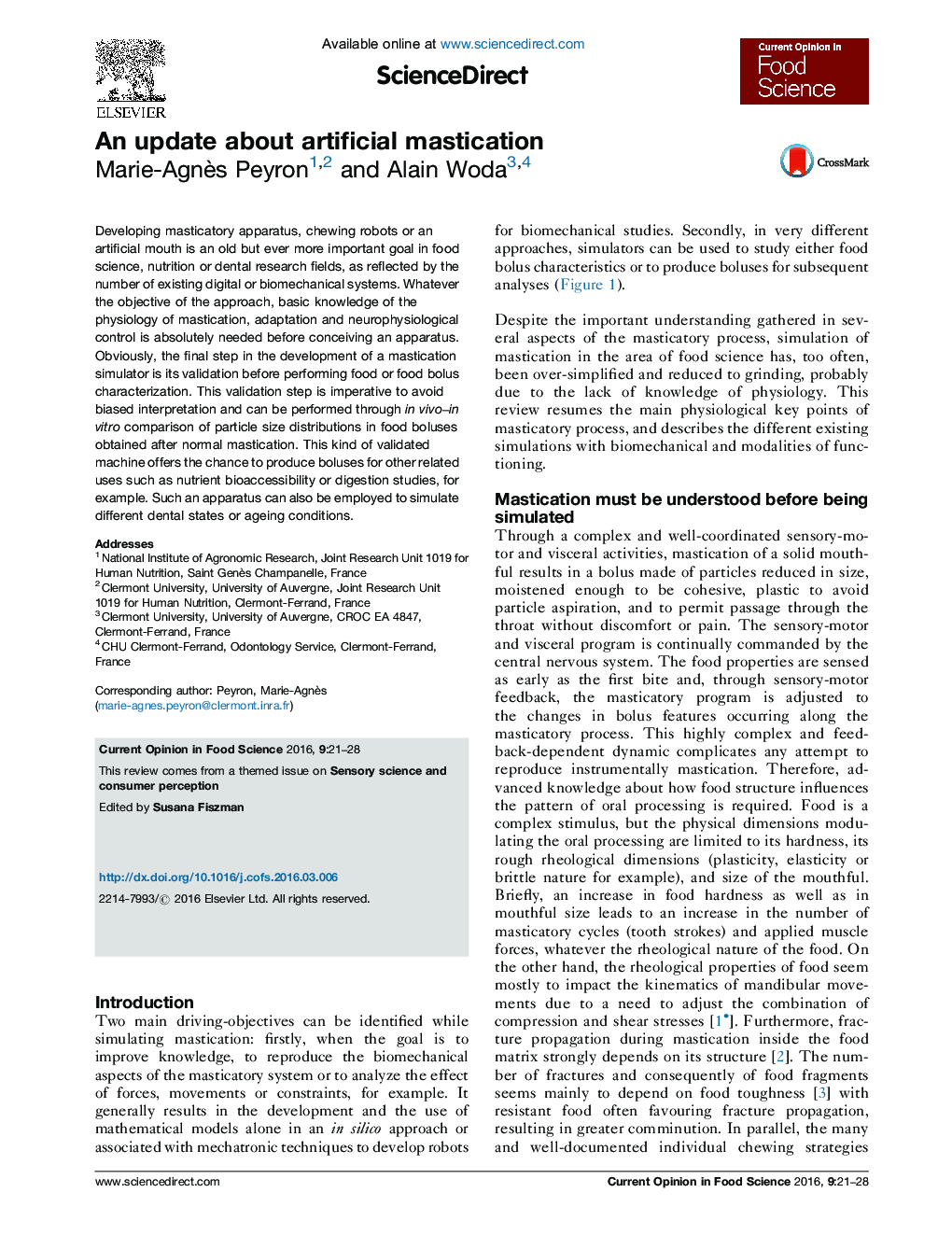| Article ID | Journal | Published Year | Pages | File Type |
|---|---|---|---|---|
| 2079629 | Current Opinion in Food Science | 2016 | 8 Pages |
•Masticatory function must be known before being simulated.•Few mastication simulators have been properly validated.•Some mastication simulators have been developed to gather knowledge.•Other models reveal bolus features (dynamics, formation) in various oral conditions.•Mastication models could supply an attractive help for digestion/nutrition studies.
Developing masticatory apparatus, chewing robots or an artificial mouth is an old but ever more important goal in food science, nutrition or dental research fields, as reflected by the number of existing digital or biomechanical systems. Whatever the objective of the approach, basic knowledge of the physiology of mastication, adaptation and neurophysiological control is absolutely needed before conceiving an apparatus. Obviously, the final step in the development of a mastication simulator is its validation before performing food or food bolus characterization. This validation step is imperative to avoid biased interpretation and can be performed through in vivo–in vitro comparison of particle size distributions in food boluses obtained after normal mastication. This kind of validated machine offers the chance to produce boluses for other related uses such as nutrient bioaccessibility or digestion studies, for example. Such an apparatus can also be employed to simulate different dental states or ageing conditions.
